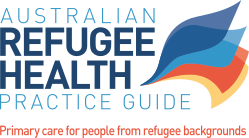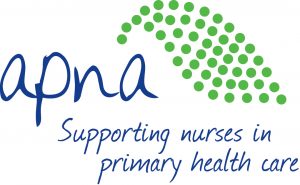
Strongyloidiasis
Beverley-Ann Biggs, Margaret Kay, Aesen Thambiran
Recommendations
- Offer blood testing for strongyloides serology to all people.
- If serology is positive or equivocal:
- check FBE for eosinophilia and perform stool microscopy for ova, cysts and parasites
- treat with ivermectin 200mcg/kg (≥15kg) on day 1 and 14
- perform follow-up serology at 6 and 12 months post- treatment. Also, repeat eosinophil count and/or stool sample if the initial tests were abnormal
- Refer pregnant women or children <15kg for specialist management.
Overview
Strongyloides stercoralis, an intestinal parasitic nematode, is estimated to infect at least 370 million people worldwide, although prevalence studies are heterogeneous both within and between countries.129 Strongyloidiasis can occur without any symptoms, but may also present as a potentially fatal hyper-infection or disseminated infection. The most common risk factors for these complications are immunosuppression caused by corticosteroids, and infection with human T-lymphotropic virus (HTLV) or HIV. A definitive diagnosis of strongyloidiasis can be made by microscopic identification of larvae in stool, but multiple fresh samples and concentration techniques are required to achieve reasonable sensitivity. Given the ease of screening with serological testing, the availability of effective short course treatment, and the long-term risk of morbidity and mortality from disseminated infection, active post-arrival screening of high-risk groups has been previously recommended.93,124,130
Strongyloidiasis is endemic in many countries, with high prevalence particularly noted in Africa, Asia and South America.131 In refugees settling in Western countries in the last decade, the highest prevalence has been documented in those from South East Asia and Africa. Prevalence in refugee-like populations depends on country of origin and the migration journey, and recently high rates have been reported in Latin American refugees (61%) with eosinophilia in Madrid132 and in Iraqi children (13%) settling in New York.133 Strongyloidiasis is endemic in some parts of Australia134 and is common in refugee and immigrant populations from high-prevalence areas.135 Published Australian surveys have reported prevalence estimates ranging from 1–33%.39,43,48,108 In Hazara refugees settling in rural Australia, the prevalence has been <5% (personal communication M. Sanati-Pour). See prevalence tables for more information.
Transmission of strongyloides occurs through contact with soil or surface water containing infectious (filariform) larvae. Larvae enter through the skin, travel to the lungs via the blood stream, and penetrate the alveolar spaces. They then move to the pharynx, are swallowed, and mature to adult worms in the small intestine. Eggs hatch and the resulting early larval stage (rhabditiform) pass out in the faeces and either moult twice to become filariform larvae, or become free-living adult males and females that mate and produce rhabditiform larvae. The latter normally develop into infective filariform larvae in the environment. In some patients rhabditiform larvae mature to the infectious filariform stage within the intestine and invade colonic mucosa or perianal skin to cause ‘autoinfection’. In an individual with a normal immune system the numbers of circulating larvae are controlled, but the infection may persist for decades. Those with depressed cell-mediated immunity are at risk of disseminated infection with large numbers of circulating larvae (hyper- infection syndrome).136
History and Examination
Most infected individuals are asymptomatic, or, have minimal symptoms and are therefore unlikely to seek treatment.
Recent infection may be associated with ‘ground itch’ or pruritic rash at the site of larval penetration. A slowly moving cutaneous linear eruption (larva currens) associated with migration of larvae under the skin is also characteristic of recent infection. Urticarial skin rashes may occur around the buttocks and hips, and purpuric skin lesions, angioedema and erythroderma have also been reported.
Intestinal symptoms include intermittent watery diarrhoea, nausea, vomiting, abdominal pain and weight loss.130 Pulmonary symptoms with dry cough, dyspnoea, and wheezing, with or without eosinophilia (similar to Loeffler’s syndrome) may be associated with larval penetration of alveolar spaces. Asthma and repeated episodes of fever, cough and/or dyspnoea (pneumonitis) may occur in some patients. A history of larva currens, the rash associated with strongyloidiasis, is rarely volunteered, but may emerge with specific questioning (See Skin Infections).
Chronic strongyloidiasis may be complicated by secondary gram-negative septicaemia and/or meningitis. In patients with impaired cell-mediated immunity (after corticosteroids, cytotoxic agents, malignancy, malnutrition etc.), the combination of immunosuppression and autoinfection may lead to massive larval invasion of the lungs and intestinal tract (‘hyper-infection syndrome’ or ‘disseminated strongyloidiasis’). HTLV-1 and, to a lesser extent, HIV are also risk factors for disseminated infection because of immunosuppression. Patients with disseminated disease may present with abdominal pain and distension, intestinal obstruction, shock, pulmonary and neurologic complications and septicaemia. Eosinophilia may be absent due to immunosuppression.137 Disseminated strongyloidiasis and the rapidly progressive hyper-infection syndrome have a poor prognosis with a mortality rates of >60%.138,139 Hyper-infection may occur many years after resettlement in Australia.
Investigation
Strongyloidiasis is usually asymptomatic. Therefore screening with serology should be offered to all people from refugee-like backgrounds. In addition, the diagnosis of strongyloidiasis should be considered if there are clinical signs and symptoms, or unexplained eosinophilia. The sensitivity and specificity of Strongyloides stercoralis serology is reported to be up to 94.6% and 99.6% respectively, depending on the assay used.140 However, as there is no gold standard test for comparison, these are estimations only.
Limitation of tests
Serology may overestimate the prevalence of disease due to cross-reactivity with other nematode infections. Therefore a single stool examination is recommended following a positive serological result to investigate further for other infections.
Eosinophilia has a poor predictive value for detecting strongyloides infection ranging from 25% to 83% in different series.141–143
Stool microscopy is insensitive for detecting strongyloides infection unless multiple fresh, warm samples are examined.144,145 The sensitivity is higher in patients with hyper-infection syndrome because of the large number of larvae present. Harada-Mori and agar plate methods increase detection rates significantly. The main value of stool microscopy is that it can be used to monitor response in the first few months after treatment and to exclude co-existing enteric pathogens.
Management and Referral
Caution
Hyper-infection syndrome is a medical emergency and admission to hospital, management of sepsis and treatment with ivermectin should be initiated as soon as possible.137
If serology is positive or strongyloides larvae are identified on stool microscopy, treat with ivermectin 200 μg/kg (≥15kg) at day 1 and 14 (two doses total).
Four studies have compared the efficacy of a single oral dose of 200 μg/kg of Ivermectin with two oral doses of 200 μg/kg given either on consecutive days or two weeks apart. In one study, two doses of ivermectin was more efficacious than a single dose (100% v 77% cure, respectively) whereas in the other three studies the efficacy was similar (>93%) for both regimens.130 However, as the efficacy of ivermectin against extra intestinal larvae is uncertain, we advise two doses of ivermectin two weeks apart to increase the number of larvae exposed to the drug in the gastrointestinal tract during the autoinfection cycle. This approach is supported in other recommendations.93,130 Albendazole has been shown to have inferior efficacy in comparison to ivermectin in numerous studies, although longer duration of therapy (400mg twice daily for 7 days) has increased efficacy (63%146) and may be used in patients in whom ivermectin is contraindicated, including in younger children.
| Table 7.1: Conversion of ivermectin tablet quantities corresponding to 200mcg/kg bodyweight dose123 | |
| Stromectol® blister pack | |
| Dosage in strongyloidiasis | |
| Bodyweight (kg) | Dose (number of 3mg tablets) |
| 15-24 | 1 |
| 25-35 | 2 |
| 36-50 | 3 |
| 51-65 | 4 |
| 66-79 | 5 |
| ≥ 80 | Approx. 200mcg/kg |
In persons from West or Central Africa co-infected with Loa loa, ivermectin can also cause encephalopathy and other severe adverse reactions. Those with neurocysticercosis or a history of seizures may be at risk of acute encephalopathy as a result of ivermectin treatment.93 Consider referral to a specialist prior to ivermectin treatment if Loa loa or neurocysticercosis are suspected (a history of migratory subcutaneous swellings; ‘eye-worm’, or seizures; unexplained lymphadenopathy; unexplained eosinophilia).
Follow up
Serology is currently the best measure of treatment efficacy available as there is a decline in antibody titre after treatment. Decline in serological titres after effective treatment may be seen in many cases but can take 12 months or longer with current tests available in Australia. Therefore, serological testing should be repeated at 6 months and repeated at 12 months after treatment.144,147 Follow up serology should preferably be done in the same laboratory and in parallel with previous specimen where available. Seroreversion can be considered proof of cure.
Full blood counts for eosinophilia and stool microscopy for larvae are too insensitive for assessment of treatment efficacy. Patients who remain seropositive despite adequate treatment should be referred for specialist management.
Considerations for Children
Ivermectin has an excellent safety record, but safety data is too limited to support its use in pregnancy or in children <15kg.
Avoid albendazole in children <6 months and adjust dosing for children <10kg.
Considerations in Pregnancy and Breastfeeding
Ivermectin is a category B3 drug in pregnancy. It is considered safe in breastfeeding.
Albendazole is teratogenic in the 1st trimester of pregnancy (category D drug). In the 2nd and 3rd trimesters, it has not been shown to be associated with congenital abnormalities. Albendazole appears safe during breastfeeding,76 it passes into breast milk however systemic concentrations in the mother are low, except when used for hydatid disease or neurocysticercosis.




